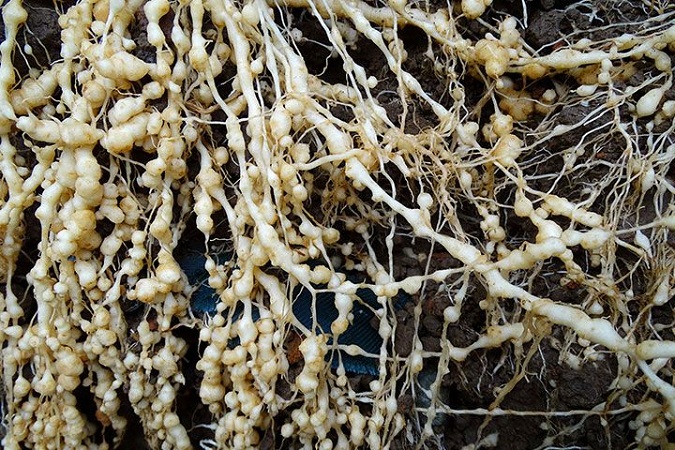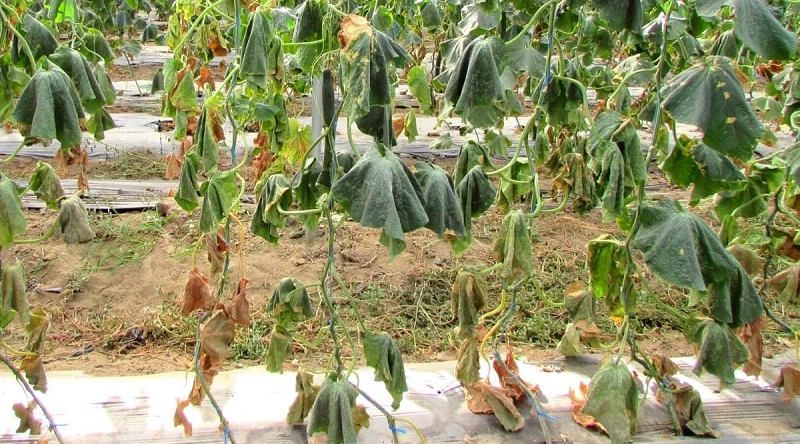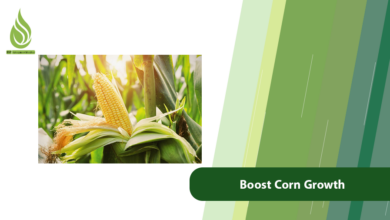
Mastering Root-Knot Nematode Control with Effective Strategies
Root-knot nematode disease represents one of the most prevalent and challenging issues in contemporary agriculture. Nematodes, which are microscopic worms functioning as plant parasites, can inflict significant damage on plant roots. Such damage hampers a plant’s capacity to absorb water and nutrients, ultimately leading to reduced yield and quality of crops.
Given the vital role agriculture plays in providing food and sustaining livelihoods, it is essential to control and manage this disease effectively. This article explores the causes, symptoms, effects, and control methods associated with nematode disease to assist farmers in managing this challenge proficiently.
What is a Nematode and How Does it Occur?
Nematodes are a group of small invertebrates found in a variety of environments, including soil, freshwater, and marine ecosystems. They vary in size, ranging from a few microns to several centimetres.

Nematodes can be categorised into two main types: free-living nematodes and parasitic nematodes. Free-living nematodes thrive in soil, water, and organic matter, playing a crucial role in decomposition and nutrient cycling. In contrast, parasitic nematodes harm plants and animals, leading to diseases and economic losses. Notable types of parasitic nematodes include:
- Root Nematodes: These nematodes invade plant roots, causing substantial swelling or galls. They can seriously impact plant health and reduce agricultural yields.
- Stem Nematodes: Targeting the stems and flowers, these nematodes can cause wilting and diminish product quality.
- Leaf Nematodes: These nematodes attack the leaves of plants, resulting in yellowing and reduced yields.
Nematodes can be introduced to your land through contaminated soil, farming equipment, infected seeds, irrigation water, and insects.
Growth Conditions of Root-Knot Nematode
Among the various types of nematodes, root-knot nematode is particularly damaging to farmers. Known as internal and non-migratory parasites, they penetrate plant roots and secrete specific enzymes, such as proteases, that alter the host plant’s metabolism to their advantage and that of pathogenic fungi. In response to this invasion, the plant enlarges cells and increases their number in the root tissues by synthesising hormones like auxin and other substances. These changes disrupt the plant’s structural, physiological, and chemical functions, ultimately leading to significant reductions in growth and considerable economic losses.
Root-knot nematode flourishes under certain conditions, including:
- Moist Soil: High soil moisture levels can enhance nematode activity and development. Soils with elevated water retention capacity create favourable conditions for the proliferation of root-knot nematode.
- Soil pH: A pH range of 6 to 7.5 is optimal for nematode growth, while alkaline soils support their proliferation.
- Moderate Temperatures: Temperatures between 20 and 30 degrees Celsius are ideal for nematode activity and reproduction. Extreme temperatures can adversely affect the mobility and development of these nematodes.
- Continuous Planting: Repeated cultivation of nematode-sensitive plants without altering planting patterns can lead to increased nematode populations.
- Lack of Crop Rotation: Failing to utilise resistant crops during planting periods can contribute to higher nematode populations.
- Neglecting Soil Hygiene: Poor hygiene practices on farms, such as not disinfecting soil and using contaminated plants, facilitate the spread of nematodes.
- Inappropriate Use of Chemical Fertilisers: Misapplication of fertilisers can disrupt the soil ecosystem balance, creating more favourable conditions for nematodes.

Signs and Symptoms of Nematode Disease
Nematode-induced diseases can manifest a variety of signs and symptoms in plants. The appearance of these symptoms depends on the nematode species, the severity of the infection, and the plant type. Key signs and symptoms of nematode disease include:
- Growth Disorders: Infected plants typically exhibit weaker growth, with leaves often appearing small and thin.
- Yellowing and Wilting: Affected plants may wilt even with adequate watering and nutrition. Leaves may turn yellow or develop abnormal spots.
- Defects in Fruit and Seed Production: Infected plants may yield fewer fruits and seeds, affecting overall crop quality.
- Yield Reduction: Crop plants may experience diminished yields and compromised quality.
- Increased Susceptibility to Diseases: Plants infected with nematodes become more vulnerable to other diseases and pests.
Timely identification of nematode signs and symptoms can facilitate effective management of this disease. If you observe any of these symptoms, it is advisable to consult an agronomist or plant specialist.
Symptoms of Root-Knot Nematode Disease
The hallmark of root-knot nematode disease is the development of knots and swellings on plant roots, resulting from nematode activity. In severe cases, the roots may suffer significant damage and rot. The abnormal growths that form in plant roots are referred to as root galls. In cases of root-knot nematode infection, the roots may appear narrow and weak, impairing their ability to absorb water and nutrients effectively.

Nematode Disease Prevention Methods
Preventing diseases caused by nematodes requires a multi-faceted approach aimed at reducing nematode populations and preventing damage. Here are some effective prevention methods:
- Crop Rotation and Changing Plant Types: Rotating different crops throughout the seasons can help diminish nematode populations. Certain plants are susceptible to nematodes, while others exhibit resistance. Options like wheat, barley, lettuce, and alfalfa make excellent candidates for rotation.
- Cultivation of Resistant Varieties: Opting for plant varieties that are resistant to nematodes can be beneficial in controlling these pests. These resistant cultivars tend to withstand nematode attacks and the diseases they cause more effectively.
- Adherence to Hygiene Principles: Nematodes can easily spread through contaminated surface or groundwater, as well as through the soles of shoes, vehicle tires, and infected seeds. To mitigate this risk, it’s essential to strictly control entrances and exits to fields and ensure proper disinfection practices are in place. Constructing a disinfecting basin filled with lime water or Bordofix for cleaning the wheels of trailers, tractors, and sprayers is recommended. Additionally, tools and machinery can be disinfected using a sprayer.
- Improving Soil Quality: Preparing agricultural land is crucial for controlling nematodes. Incorporating compost and organic matter can enhance soil microbial diversity, which naturally helps manage nematode populations. Fertilizers containing phosphorus, potassium, silica, calcium, and sulfur can also boost plants’ resistance to nematodes.
- Monitoring and Surveillance: Regular monitoring and inspection for disease symptoms can facilitate early detection of nematodes and the damage they cause.
- Irrigation Management: Proper irrigation practices that prevent waterlogging will promote root health and reduce the risk of nematode infestations.
Control and Correction of Soil pH to Manage Nematodes
Nematodes thrive in alkaline soils, so it’s vital to adjust soil pH through fertilization and pH management techniques. The ideal soil pH for preventing nematodes is neutral to slightly acidic. Sulfur fertilizer can be employed for this purpose. A soil pH range of 6.0 to 7.5 is most effective for controlling nematodes, as it limits their activity and inhibits growth.
When pH levels exceed 7.5, nematode activity increases, allowing some species to flourish. Maintaining soil pH between 6 and 7 can help lower nematode populations and enhance plant health.
Among the sulfur-containing fertilizers that can help regulate soil pH is ammonium sulfate. This fertilizer combines nitrogen and sulfur, providing essential nutrients to strengthen the soil and manage pH levels. Barsava Sepehr Part Group manufactures high-quality crystalline ammonium sulfate, available both within Iran and internationally.

Biological Control of Nematode Disease
Biological control represents a sustainable method for managing nematode populations. This approach utilises living organisms, microorganisms, and natural processes to keep nematode numbers in check.
Certain bacteria and fungi, such as Bacillus firmus and Paecilomyces lilacinus, serve as natural enemies of root-knot nematode. The application of biological nanoparticles can also help control nematode populations, as these nanoparticles can function as natural toxins. Additionally, plant extracts like garlic and turmeric have demonstrated anti-nematode properties.
Planting crops that are resistant to nematodes or that can help reduce their populations, such as clover and certain seed crops, can be an effective control strategy. Some nematodes, like Steinernema and Heterorhabditis, act as parasites on harmful nematodes, helping to manage their populations.
Increasing soil biodiversity through diverse crop planting and sustainable agricultural practices can further reduce nematode numbers. The incorporation of organic materials and compost improves soil quality and boosts microbial activity. Overall, biological control methods can reduce reliance on chemical pesticides and enhance soil health, providing a sustainable long-term solution for managing nematodes.
Chemical Control of Nematode Disease
Chemical soil disinfection is one method for combating root-knot nematode. When nematode populations in the soil are exceptionally high, nematicides are used prior to planting crops. Nematicides can be classified into systemic and non-systemic categories. Systemic nematicides are absorbed by the plant and can help control nematodes present within plant tissues, while non-systemic nematicides are typically applied to the soil, targeting nematodes in the ground.
Using nematicides at the appropriate time—usually before planting or during the early growth stages of plants—is critical to prevent damage caused by root-knot nematode. Application methods may include spraying, irrigation, or direct soil application, depending on the specific product and soil conditions.
It’s important to note that some nematicides can negatively impact soil microflora and compromise soil health. Therefore, caution is advised when using these chemicals. Always consult agricultural experts and carefully read the relevant instructions before applying any type of nematicide.
